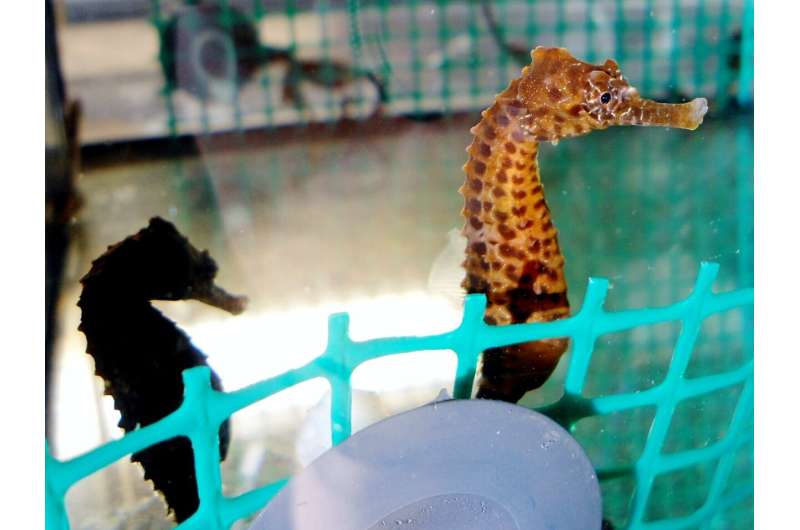Who's your daddy? Male seahorses transport nutrients to embryos

New research by Dr. Camilla Whittington and her team at the University of Sydney has found male seahorses transport nutrients to their developing babies during pregnancy. This discovery provides an opportunity for further comparative evolutionary research.
Seahorses and their relatives are the only vertebrates that have male pregnancy. The expectant fathers incubate developing babies inside a pocket called a "brood pouch." We know a male seahorse can have more than a thousand embryos in the pouch at once but until now, researchers had limited understanding of how the babies are fed.
"This work adds to the growing evidence that male pregnancy in seahorses could be as complex as female pregnancy in other animals, including ourselves," said Dr. Whittington, from the School of Life and Environmental Sciences. "We now know that seahorse dads can transport nutrients to the babies during pregnancy, and we think they do this via a placenta. It's not exactly like a human placenta though—they don't have an umbilical cord, for example. We need to do further histological work to confirm this."
Seahorses are emerging as important model species for understanding the evolution of live-bearing reproduction, said Dr. Whittington.
"We can draw some parallels between seahorse pregnancy and human pregnancy," she said. "Seahorse dads seem to do some of the same things that human mums do, including transporting nutrients and oxygen to developing embryos, and immune modulation to protect the babies from infection."
The research published in Journal of Comparative Physiology B was led by University of Sydney honors student Zoe Skalkos in collaboration with Dr. James Van Dyke at La Trobe University.
The study builds on previous genetic evidence suggesting that male seahorses might transport nutrients to developing embryos. This new study confirms, in the first experimental evidence of "patrotrophy" (nutrient transport from dad to babies). It also identified one of the classes of nutrients being transported: energy-rich fats.
"My team is using a range of techniques to investigate the biology of seahorse pregnancy," Dr. Whittington said. "We want to understand more about the seahorse pouch and the ways it protects and supports the baby seahorses."
Honors student Zoe Skalkos, who led the research, said: "It's really exciting because it's a big step in understanding the relationship between dad and baby in male pregnancy."
More information: Zoe M. G. Skalkos et al. Paternal nutrient provisioning during male pregnancy in the seahorse Hippocampus abdominalis, Journal of Comparative Physiology B (2020). DOI: 10.1007/s00360-020-01289-y
Provided by University of Sydney



















